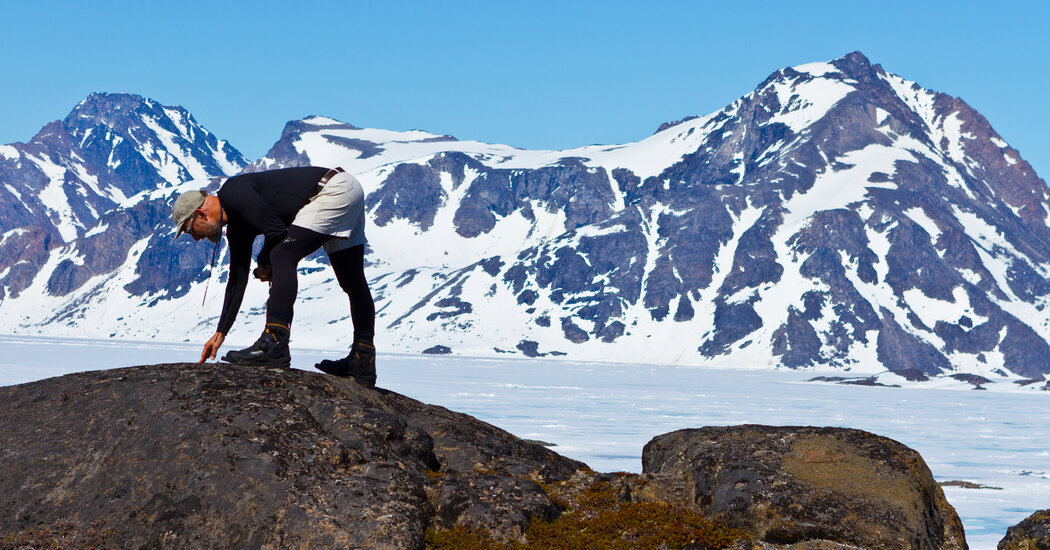In a new book, geologist Paul Bierman recounts the moment he found astonishing evidence that Greenland’s ice sheet had melted in the ancient past.
Somewhere deep inside a glacier in Greenland are the remains of Camp Century, a short-lived experiment in making the Cold War literal. In 1959, the U.S. Army began building a network of tunnels, carved inside the ice, that it hoped might become a launch site for nuclear missiles.
By 1967, the military had abandoned the idea and the base. But the samples of ice and frozen sediment that scientists extracted from deep underneath Camp Century are still providing new insights into the planet’s history.
When Paul Bierman, a geologist at the University of Vermont, began studying some of these samples, he made a surprising discovery. Scientists had once believed that Greenland’s ice sheet had been largely stable for the last 2.6 million years. But what Dr. Bierman and his colleagues saw under the microscope provided clear evidence that parts of the ice sheet had temporarily melted away far more recently. Roughly 400,000 years ago, the site had been free of ice.
Dr. Bierman spoke to The New York Times about this discovery, which he chronicles in his new book, “When the Ice Is Gone.” This conversation has been condensed and edited for clarity.
We wouldn’t have these samples if not for Camp Century. What was the Army doing in Greenland?
That started in World War II. Greenland is upwind of the European theater, so in order to do the weather forecasting, they needed boots on the ground in Greenland. It was also the shortest path to bring airplanes from the U.S. to the Allies.
The U.S. got its foothold in Greenland, and what they realized is they didn’t know very much about cold-region science. The men who were stationed there didn’t have the right sleds, couldn’t move across the ice safely, didn’t understand how ice and snow behaved.
